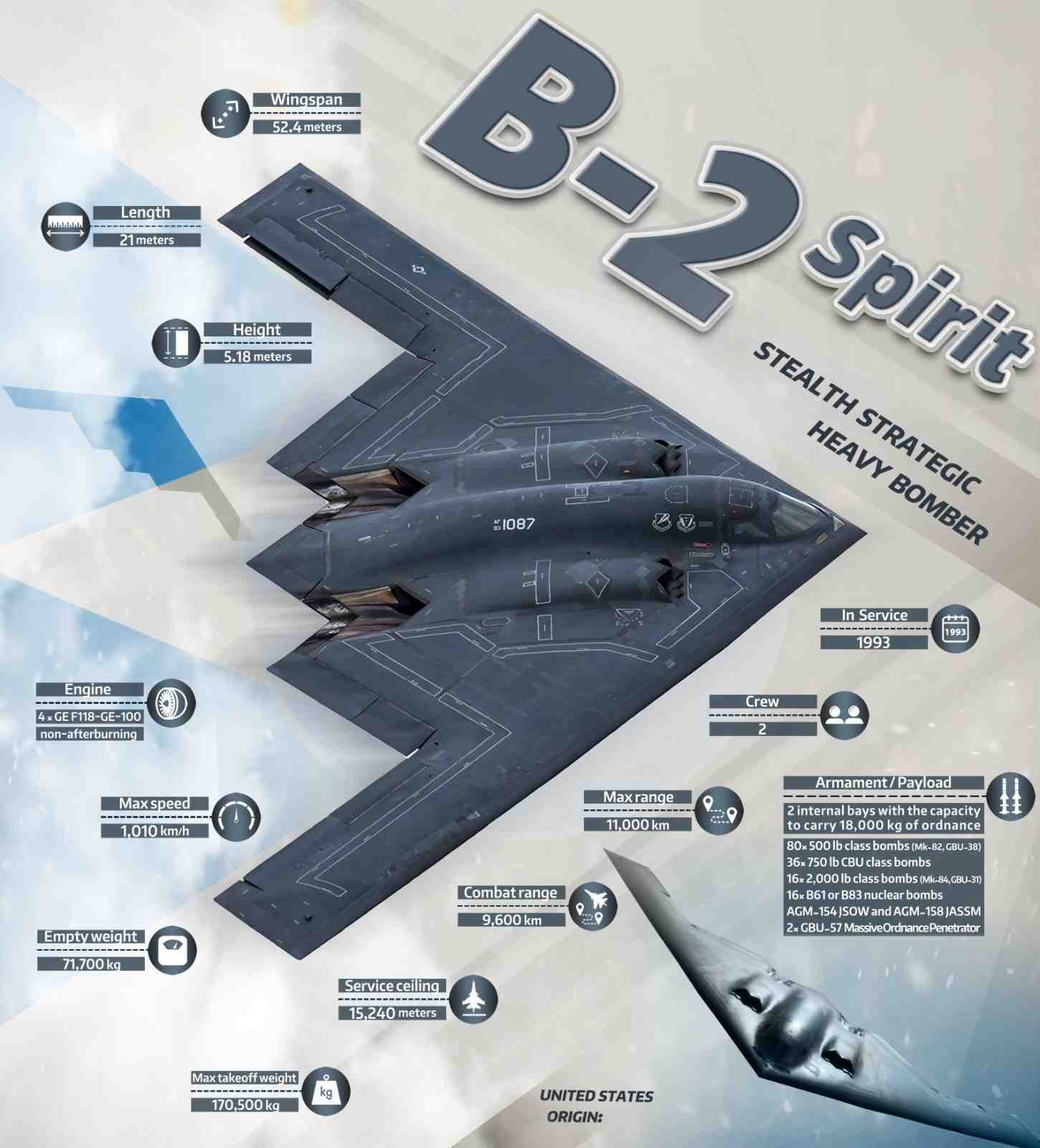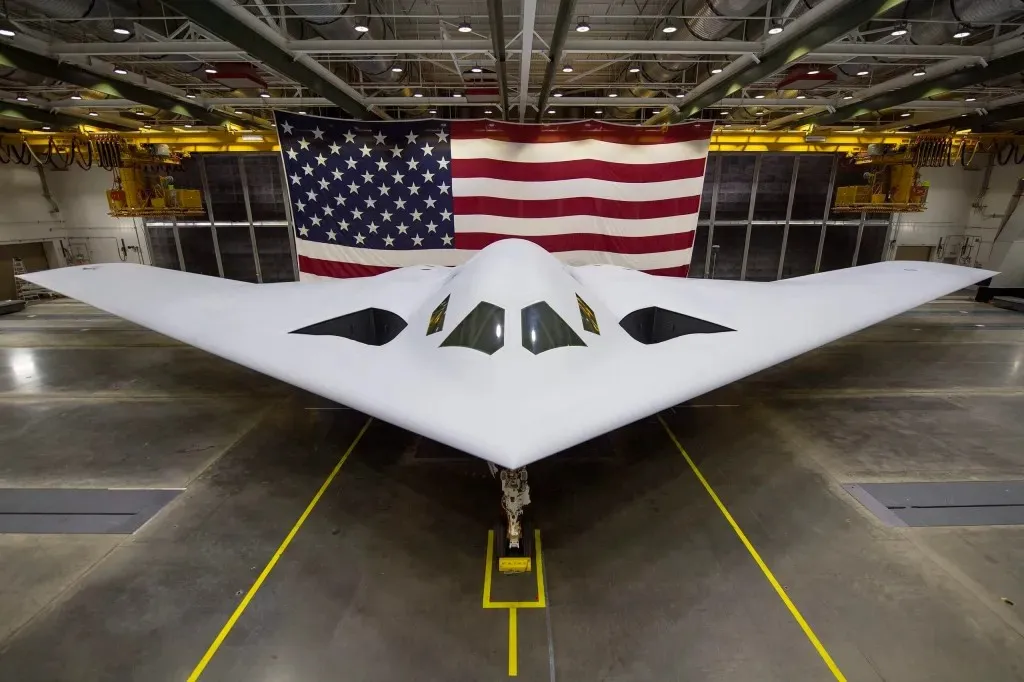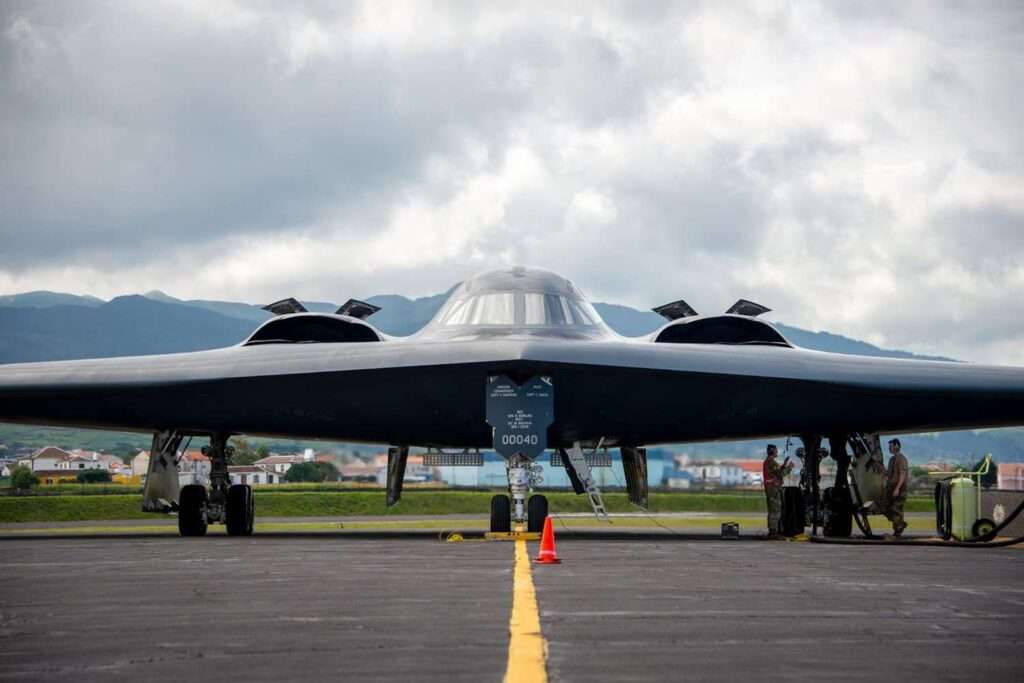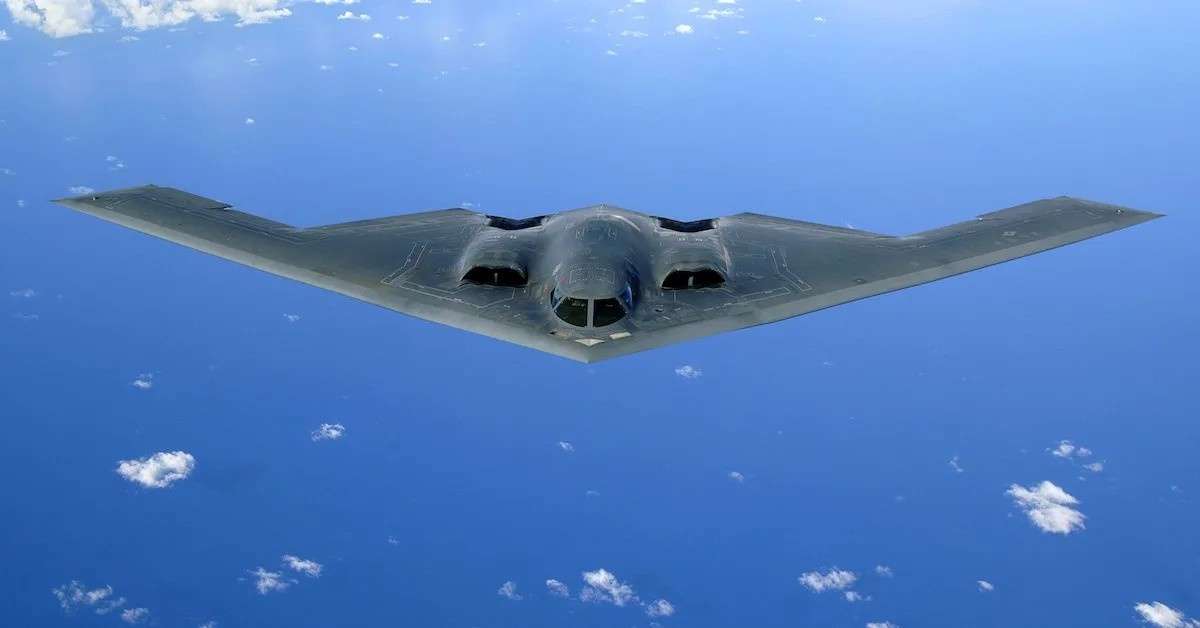More than 30 years after its first flight, the B-2 Spirit is still a terrifying image of American air dominance. While developed over 30 years ago during the Cold War, the B-2 is still a relevant, active deterrent in a multi-polar, high-risk world. In 2025, with tensions with China flaring in the Taiwan Strait and with Russia in Eastern Europe, the stealth bomber has come back to the forefront of American power projection.
A Strategic Flyby Over the Pacific
In May 2025, the United States Air Force flew two B-2s from Whiteman Air Force Base in Missouri to Guam under Operation Pacific Sentinel. Although the U.S. Air Force did not officially say it, the timing of the B-2’s sudden movement to Guam came just days before Chinese naval exercises around Taiwan and was a demonstration of force. While Pentagon officials offered generic comments regarding “strategic deterrence” to the press, satellite images showed that the B-2s were loaded with GBU-57 Massive Ordnance Penetrators, which are buried deep-target bombs; therefore, implying a contingency scenario involving buried missile silos and underground bases and batteries in China.
At the same time, there were reputable but unsubstantiated reports claiming that the B-2s were put into “heightened alert status” related to a classified Pacific Command war games scenario that simulated a Chinese blockade against Taiwan, and the war games scenario apparently validated the long-held belief by strategists that the B-2 is the only crewed platform that can strike core C4ISR infrastructure in China before a kinetic war breaks out of control.
The B-2’s Psychological Strike
In February 2025, as Russia’s second phase offense in eastern Ukraine was underway, and NATO was confirming the forward position of a B-2 Spirit to RAF Fairford, UK, the B-2 never entered Ukrainian airspace, but its positioning could not have come at a better time: 24 hours after arrival on station and the Russian Federation reportedly withdrew Iskander missile units from Kaliningrad. Intelligence analysts believe this was directly influenced by the Deterrent nature of the positioning of the B-2 and is an example of the power of psychological and strategic deterrence.
Additionally, classified ISR tracking available to NATO show
s the B-2 conducted continuous “combat rehearsal flights” just outside the air defense detection zones on Belarus and Russia; the preposition of the B-2’s sending a strong strategic warning: continue some form of aggression and America could be capturing a mission against the Russian ground defenses and would bring the most feared bomber in the world into mission distance.
The B-2’s Role in Strategic Ambiguity
The B-2 is designed to fly undetected through the most advanced radar systems. It can go 10,000 miles without refueling and drops nuclear and conventional ordnance with surgical precision. In an era where the ambiguity in strategic warfare is a weapon itself, the B-2 provides Washington, D.C. with only a few things that can be used as a credible threat without publicly provoking an adversary.
One example would be the B-2’s involvement in Operation Enduring Shield in 2024 to thwart an ISIS-K resurgence in Northern Afghanistan. A pair of B-2s were on a 38-hour mission from Missouri to conduct airstrikes on a cave complex in Kunar province, destroying a high-value target in real time. The Afghan Taliban condemned the airstrikes, but were interestingly, unable to respond because they likely never saw them coming.

Global Threat Perceptions of the B-2
China: The PLA is making strides toward both an anti-stealth radar network and a satellite detection grid, however, defense leaks identified that Chinese generals still see the B-2 as the most “unpredictable” U.S. capability. They regularly conduct models among their most sensitive areas (e.g., Shaanxi nuclear tunnels; Chengdu command bunkers) in anticipation of a B-2 presence and potential vulnerability.
Russia: Though Moscow’s S-500 systems would theoretically be capable of intercepting stealth aircraft, they can only do so if they can detect them in time. During various simulations, B-2s have been able to “neutralize” radar and missile defense sites during the first 4 hours of a conflict.
Iran: Under CENTCOM’s Rapid Response Directive, U.S. B-2s were deployed to Diego Garcia temporarily following the Israeli airstrike on what was believed to be a nuclear site in Qom, in April 2025. Though the B-2s never dropped ordnance, Iranian media referenced “strategic intimidation” when the B-2s were temporarily deployed. Privately, Iranian commanders told foreign analysts that the presence of B-2s over the Gulf would render their missile defenses “useless.”
The B-21 Raider is Rising, But the B-2 is Still in the Hunt
The B-21 Raider is on the way, which already means the B-2 has less time to fly, yet the B-2 is not finished. The Raider will one day supplant the B-2, and at some point, the Raider will be capable of AI-enabled stealth, have significantly lower maintenance costs, and be integrated into multi-domain operations. But many in the defense community still believe the B-2 will be around and operational with Air Force elite strike rotations for 10-12 more years starting with nuclear deterrent first strikes and deep penetration first strikes. The impact may vary, but every B-2 flight hour costs more than $150,000, and it gets 119 hours of maintenance for every hour it flies. For U.S. defense planners, the B-2 is an invaluable resource: it is the bomber that rewrites the rules of war before the war begins.

Conclusion
While the B-2 Spirit is an engineering marvel, it also represents a psychological weapon, a geopolitical conciliation, and a first-strike policy all at the same time. As instability continues to grow globally from risk factors in the Indo-Pacific and borders of Europe, to the Middle East, the B-2’s message is clear, even if it is stealthily flying: In a time of demonstrated threats and audible politics, could America’s invisible bomber still be its loudest response?
Frequently Asked Questions:
- Why is the B-2 Spirit still relevant in 2025?
Despite being over 30 years old, its stealth, range, and precision still make it unmatched for deep strike and deterrence missions. - How is the B-2 used in modern conflicts?
It is deployed for strategic flybys, psychological deterrence, and covert strike missions in high-risk zones like Taiwan, Ukraine, and the Gulf. - Will the B-21 Raider replace the B-2?
Yes, the B-21 will eventually replace it, but the B-2 is expected to remain in elite strike roles for another decade.


